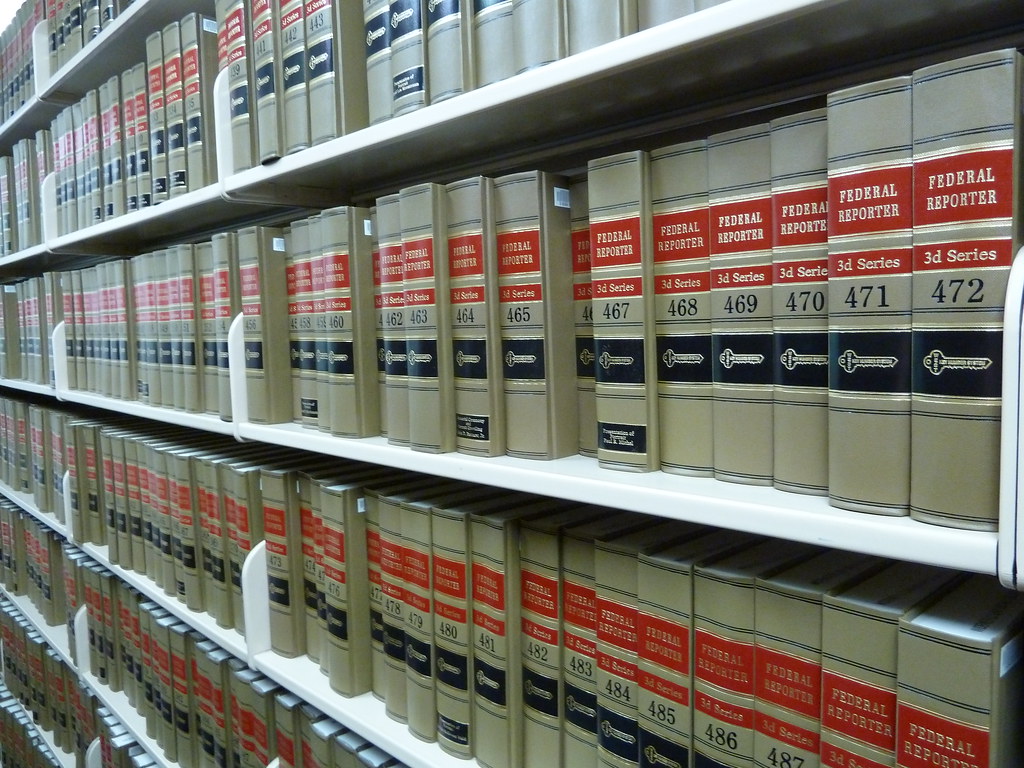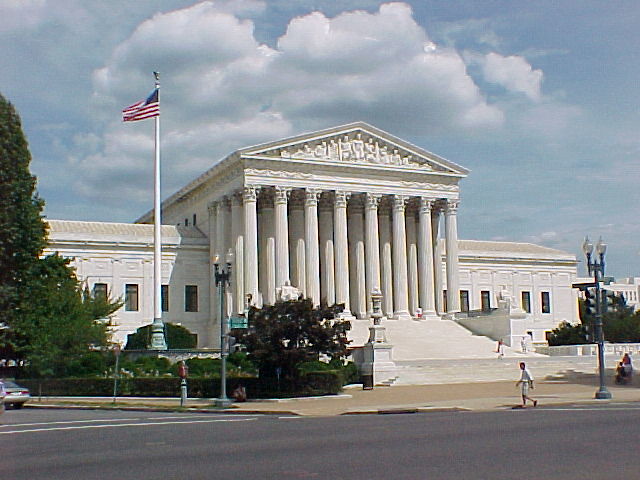
Using Westlaw

The two types of courts in the United States are state courts and federal courts.
How are courts established?
How do state and federal courts differ?
Case law consists of the written decisions of courts. Similar to statutory law passed by federal or state legislatures, court decisions in and of themselves are law. Case law is created when courts interpret and apply legal principles related to constitutions, statues, regulations, or decisions made by other courts.
Cases begin in a trial court where the parties present facts and the court makes a ruling. Only in rare circumstances are trial court decisions published. Generally, it is only when one of the parties does not agree with the trial court ruling and the case is appealed that the decision of the appellate court is published in official reporters.
Under our federal system, cases can originate in both state and federal courts. Federal cases typically cover issues concerning federal laws and those cases invoking federal jurisdiction. State cases typically involve local issues such as family, criminal, and property law. Since there can be subject overlap between these two systems, it is always good practice to search topically for both federal and state cases when doing your legal research.
You can find cases both online and in printed form. It is helpful to know in what bound reporter the case you are looking for is published in even if you do a majority of your research online. This will allow you to better understand legal citation and aid in assessing precedential value.
WEST'S NATIONAL REPORTER SYSTEM

"Law Library Books: Federal Reporter" by Janet Lindenmuth is licensed under CC BY 2.0
The National Reporter system has organized both federal and state case law into a cohesive body of law that can be researched within and across jurisdictions. The full text of opinions as well as West's editorially-supplied headnotes, summaries, and Key Numbers are contained within each case.
Each West volume contains:

The federal courts are courts of limited jurisdiction. This means that they can only hear cases which are authorized by federal statues or the United States Constitution. The federal court system has three levels: district courts (trial courts), circuit courts (first level of appeal), and the U.S. Supreme Court. There are 94 district courts and 13 circuit courts.
"US Supreme Court" by David is licensed under CC BY 2.0
| Court Type |
Description |
|---|---|
| United States Supreme Court | The United States Supreme Court is the nation's highest court and hears cases brought in federal court or in state courts where federal law is at issue. An example of the latter occurs where a person in state court asserts an issue related to the United States Constitution. |
| United States Courts of Appeals (Circuit Courts of Appeal) |
After a federal district court has issued a decision, the case may be appealed to a U.S. Court of Appeal. Circuit Courts hear appeals from cases originating from the state district courts that the circuit court covers. There are 11 numbered federal circuits dividing the United States into regions plus a 12th known as the D.C. Circuit, and a 13th called the U.S. Court of Appeals for the Federal Circuit which has jurisdiction over particular subject areas. Texas is in the Fifth Circuit: map of the United States Federal Circuits |
| United States District Courts | District Courts are federal trial courts. They hear cases which arise over disputes regarding federal law or related to parties residing in different states. Federal district courts have also been established in specified subject areas. Examples of these are U.S. bankruptcy courts (located within each federal district), U.S.Tax Court, U.S. Court of Federal Claims (for claims against the federal government), and U.S. Court of International Trade (for civil actions arising out of U.S. customs and trade laws). There are 94 federal district courts in the United States: federal district and bankruptcy courts and court website links |
For more information on federal court roles and structure,
DATABASES CONTAINING FEDERAL CASES

"Court Gavel - Judge's Gavel - Courtroom" by wp paarz is licensed under CC BY-SA 2.0
REPORTER COVERAGE: FEDERAL
You can also find print copies of cases in bound reporters. The following chart shows which court decisions are located within each reporter series.
| Title | Abbreviation | Description/Coverage |
|---|---|---|
|
Supreme Court Reporter
|
S.Ct |
Supreme Court "Supreme Court Reporters" by Adam Engelhart is licensed under CC BY-SA 2.0 |
| United States Reports | U.S. | Supreme Court |
| Federal Reporter | F. |
U.S. Courts of Appeal "Federal Reporter" by Adam Engelhart is licensed under CC BY-SA 2.0 |
| Federal Reporter, second series | F.2d | U.S. Courts of Appeal |
| Federal Reporter, third series | F.3d | U.S. Courts of Appeal |
| Federal Supplement | F.Supp. |
U.S. District Courts "Federal Supplement" by Adam Engelhart is licensed under CC BY-SA 2.0 |
| Federal Supplement, second series | F.Supp.2d | U.S. District Courts |
| Federal Supplement, third series | F.Supp.3d | U.S. District Courts |
| Federal Rules Decisions | F.R.D. |
Select U.S. District Court cases concerning Federal Rules of Criminal Procedure, Federal Rules of Appellate Procedure, and Federal Rules of Evidence not published in the Federal Supplement. "Federal Rules Decisions" by Adam Engelhart is licensed under CC BY-SA 2.0 |
| Bankruptcy Reporter | B.R. | Decisions of bankruptcy-specific federal courts at all levels. |
| Federal Appendix | Fed.Appx. | U.S. Courts of Appeal cases not published in the Federal Reporter. |
A case citation will tell you in what publication to find a case, on which page the case begins, which court decided the case, and in which year the case was rendered. For a list of federal case reporter abbreviations, select the Finding Federal Case Law tab.
EXAMPLES:
United States District Court:
United States Court of Appeals:
241 F.3d 619 (8th Cir. 2001). This citation tells you that this case appears in volume 241 of the Federal Reporter, third series and begins on page 619 of that volume. The information in parentheses tells you that this is an 8th Circuit Court of Appeals case and the decision of the Court occurred in 2001.
United States Supreme Court:
For more information on reading federal case citation, see Table 1.1: Federal Judicial and Legislative Materials in The Bluebook: A Uniform System of Citation, 20th ed.

Image dedicated pursuant to CC0 1.0
The Texas court system is composed of three basic levels: trial, appellate, and supreme. Graphic of the structure of the Texas courts,
| Court | Description |
|---|---|
|
The Supreme Court of Texas and Texas Court of Criminal Appeals
|
Texas has two supreme courts, also known as courts of last resort. The courts of last resort hear cases that are appealed from lower courts. They also consider cases that are appealed from the Fifth Circuit Court of Appeals. Civil appeals are handled by the Texas Supreme Court and the Texas Court of Criminal Appeals hears criminal appeals including those involving death penalty sentences. |
|
Texas Courts of Appeals |
After a trial court has issued a decision, the case may be appealed to one of fourteen state appellate courts in Texas. |
|
Texas Trial Courts |
There are numerous trial courts in Texas. Trial courts include state district courts, county courts, justice of the peace courts, and municipal courts.
|
| Texas Federal Courts: |
|
For more information on Texas government and the Texas Judicial System please see the Texas Government Research Guide.
Texas District Courts and other local courts
Texas trial court cases (Municipal Court, Justice of the Peace Courts, and District Court) are not published. While some larger counties provide access to online court dockets, this access does not always include access to documents. The best way to obtain documents from the district or local courts is to contact the clerk of court for the particular court that you are interested in and make a request.
DATABASES CONTAINING TEXAS CASES
REPORTER COVERAGE: TEXAS STATE AND FEDERAL
| Title | Abbreviation | Description/Coverage |
|---|---|---|
| South Western Reporter | S.W. | State courts of Texas |
| South Western Reporter, second series | S.W.2d | State courts of Texas |
| South Western Reporter, third series | S.W.3d | State courts of Texas |
| Federal Supplement | F.Supp. | Texas Federal District Courts: United States District Court for the Northern District of Texas, United States District Court for the Southern District of Texas, United States District Court for the Eastern District of Texas, United States District Court for the Western District of Texas |
| Federal Supplement, second series | F.Supp.2d | Texas Federal District Courts: United States District Court for the Northern District of Texas, United States District Court for the Southern District of Texas, United States District Court for the Eastern District of Texas, United States District Court for the Western District of Texas |
| Federal Supplement, third series | F.Supp.3d | Texas Federal District Courts: United States District Court for the Northern District of Texas, United States District Court for the Southern District of Texas, United States District Court for the Eastern District of Texas, United States District Court for the Western District of Texas |
| Federal Reporter | F. | Fifth Circuit Court of Appeals |
| Federal Reporter, second series | F.2d | Fifth Circuit Court of Appeals |
| Federal Reporter, third series | F.3d | Fifth Circuit Court of Appeals |
A case citation will tell you in what publication to find a case, on which page the case begins, which court decided the case, and in what year the decision was rendered. For a list of Texas case reporter abbreviations, select the Finding Texas Case Law tab.
EXAMPLES:
Texas Courts of Appeals:
Texas Court of Criminal Appeals:
Supreme Court of Texas:
Fifth Circuit Court of Appeals:
United States District Court:
For more information on reading Texas case citation, see Table 1.3: States and the District of Columbia in The Bluebook: A Uniform System of Citation, 20th ed.
DATABASES CONTAINING STATE CASES
REPORTER COVERAGE: ALL STATES
| Title | Abbreviation | States Covered |
|---|---|---|
| Atlantic Reporter | A. | CT, DE. DC. ME. MD. NH, NJ, PA, RI, VT |
| Atlantic Reporter, second series | A.2d | CT, DE. DC. ME. MD. NH, NJ, PA, RI, VT |
| Atlantic Reporter, third series | A.3d | CT, DE. DC. ME. MD. NH, NJ, PA, RI, VT |
| North Eastern Reporter | N.E. | IL, IN, MA, NY, OH |
| North Eastern Reporter, second series | N.E.2d | IL, IN, MA, NY, OH |
| North Eastern Reporter, third series | N.E.3d | IL, IN, MA, NY, OH |
| North Western Reporter | N.W. | IA, MI, MN, NE, ND, SD, WI |
| North Western Reporter, second series | N.W.2d | IA, MI, MN, NE, ND, SD, WI |
| South Eastern Reporter | S.E. | GA, NC, SC, VA, WV |
| South Eastern Reporter, second series | S.E.2d | GA, NC, SC, VA, WV |
| Southern Reporter | So. | AL, FL, LA, MS |
| Southern Reporter, second series | So.2d | AL, FL, LA, MS |
| Southern Reporter, third series | So.3d | AL, FL, LA, MS |
| South Western Reporter | S.W. | AR, KY, MO, TN, TX |
| South Western Reporter, second series | S.W.2d | AR, KY, MO, TN, TX |
| South Western Reporter, third series | S.W.3d | AR, KY, MO, TN, TX |
| Pacific Reporter | P. |
AK, AZ, CA, CO, HI, ID, KS, MT, NV, NM, OK, OR, UT, WA, WY |
| Pacific Reporter, second series | P.2d | AK, AZ, CA, CO, HI, ID, KS, MT, NV, NM, OK, OR, UT, WA, WY |
| Pacific Reporter, third series | P.3d | AK, AZ, CA, CO, HI, ID, KS, MT, NV, NM, OK, OR, UT, WA, WY |
A case citation will tell you in what publication to find a case, which which page the case begins, which court decided the case, and in what year the decision was rendered. For a list of state reporter abbreviations, select the Finding State Case Law tab.
EXAMPLES:
Virginia: United States District Court:
North Carolina: Court of Appeals:
Illinois: Supreme Court:
For more information on reading state case citation, see Table 1.3: States and the District of Columbia in The Bluebook: A Uniform System of Citation, 20th ed.
Newton Gresham Library | (936) 294-1614 | (866) NGL-INFO | Ask a Question | Share a Suggestion
Sam Houston State University | Huntsville, Texas 77341 | (936) 294-1111 | (866) BEARKAT
© Copyright Sam Houston State University | All rights reserved. | A Member of The Texas State University System